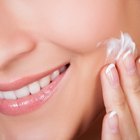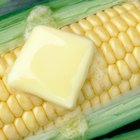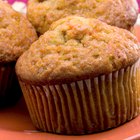
For many bakers, cream of tartar is a rather mysterious ingredient. It adds no discernible flavor, has no aroma and its appearance -- a generic white powder -- gives no clues about its purpose. Yet many recipes call for it, especially in treats such as macaroons that are made largely from egg whites. This is because cream of tartar helps turn egg whites into stable, long-lasting foams.
A Tipsy Origin
At first glance, cream of tartar appears to be a quintessential example of an artificial additive. It's visibly a powdered chemical, and looks like it was formulated in a giant laboratory somewhere. The reality is more interesting. Cream of tartar is actually made from crystals of tartaric acid, which settle out of grape juice as it ferments into wine. Winemakers filter the crystals from the leftover sediment after the wine is made, and it's these crystals -- suitably purified and finely ground -- that are sold as cream of tartar.
Foaming at the Mouth
Turning sticky, slithery egg whites into fluffy, snow-white meringue is a more complex project than it appears. The proteins in the egg ordinarily huddle up in relatively tight molecules, held together by powerful chemical bonds. The wires of your whisk, or the beater of your electric mixer, physically shear the bonds keeping the protein molecules coiled together. As the strands of protein unwind and stretch out, they form new elongated bonds that trap the air left by the whisk's passage. That stretching out process, called denaturing, is accelerated by acidity. Adding cream of tartar to the egg whites helps them whip more quickly and create a longer-lasting foam.
In Macaroons
Macaroons rely on the meringue for their shape and structure. If your meringue isn't whipped thoroughly enough, or if its foam only forms weak bonds, it can deflate badly while you're folding in ingredients such as nuts or coconut. The slow-baking cookies can also deflate in the oven before the heat cooks and sets the egg whites into their final form. By helping the egg proteins denature, cream of tartar gives the foam more and better molecular bonds. That means they'll retain their shape and texture more reliably.
A Few Options
Cream of tartar is a good choice for macaroon-making because of its neutral flavor, but you can use other acidic ingredients if necessary. Lemon juice works just as well, and its flavor is subtle enough to be unobtrusive in the finished cookies. The crystals sold at your supermarket to keep fruit from browning are made of ascorbic or citric acid, and those are a suitable substitute if you have some on hand. Warming the egg whites to room temperature before whipping them is also helpful, speeding the denaturing of the proteins.
Related Articles

Merle Norman Ingredients

A Substitute for Cream of Tartar in a ...

Ingredients in Restylane

How to Make Frosting Hard for a Cake
What Do Bakeries Use in Their Whipped ...

Cream of Tartar Substitute for Egg ...

Does Yeast Cause Holes in Bread?

Corn Starch Vs. Baking Powder in Cooking

Common Food Emulsifiers
Role of Xanthan Gum in Vegan Baking

How to Soften Marzipan

Benefits of Raw Milk

Why Is My Pastry Cream Hardened?

Heavy Whipping Cream Vs. Half & Half

Can You Proof Yeast in Warm Milk?

How Is Emulsified Shortening Used in ...

Ingredients in Curel Lotion

Substitute for Manioc Starch

Keratin Complex by Coppola Ingredients

Ingredients in Wheat Thins
References
- On Food and Cooking: The Science and Lore of the Kitchen; Harold McGee
- The Professional Pastry Chef; Bo Friberg
Resources
Writer Bio
Fred Decker is a trained chef and prolific freelance writer. In previous careers, he sold insurance and mutual funds, and was a longtime retailer. He was educated at Memorial University of Newfoundland and the Northern Alberta Institute of Technology. His articles have appeared on numerous home and garden sites including GoneOutdoors, TheNest and eHow.
Photo Credits
Oli Scarff/Getty Images News/Getty Images